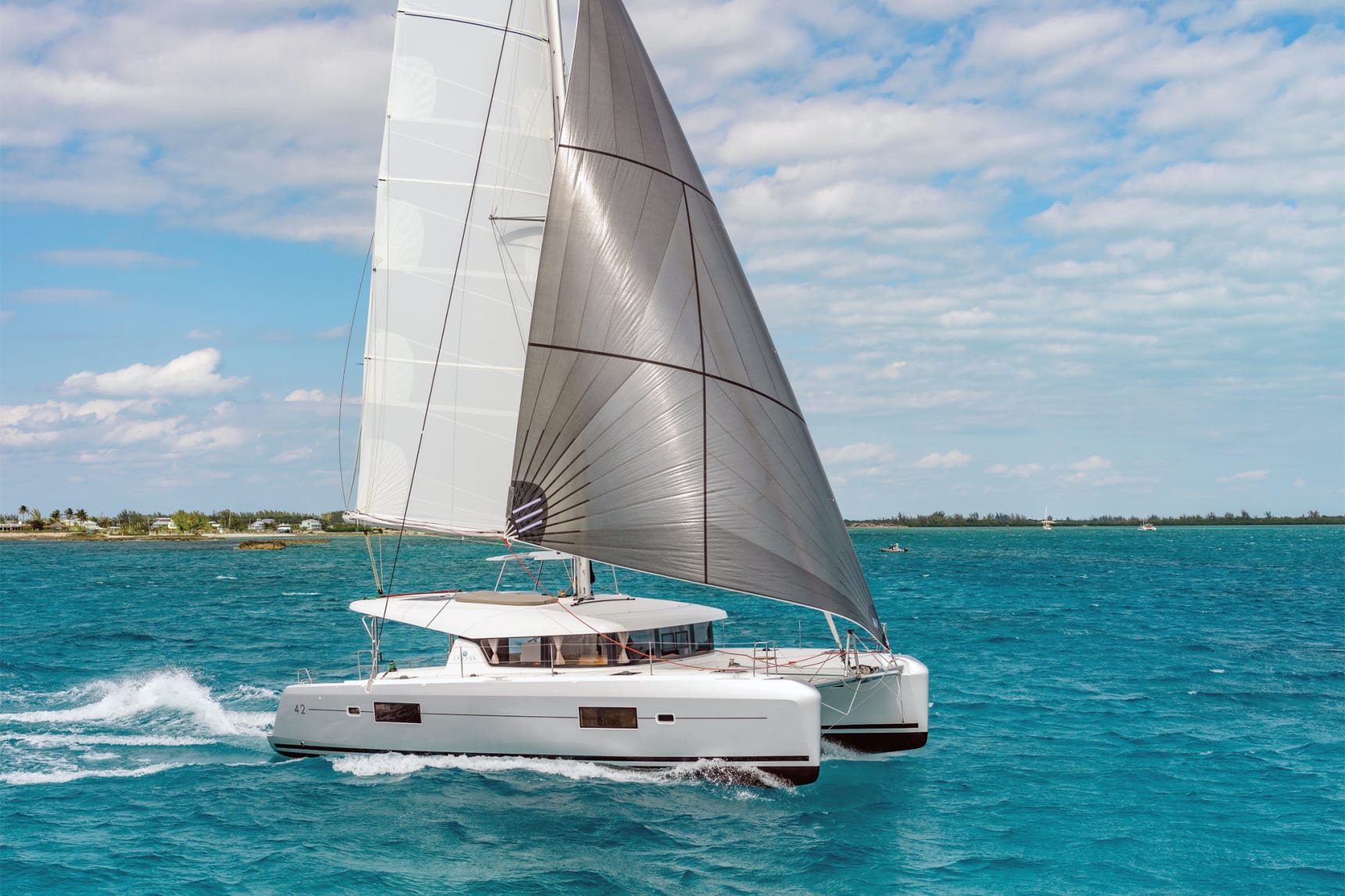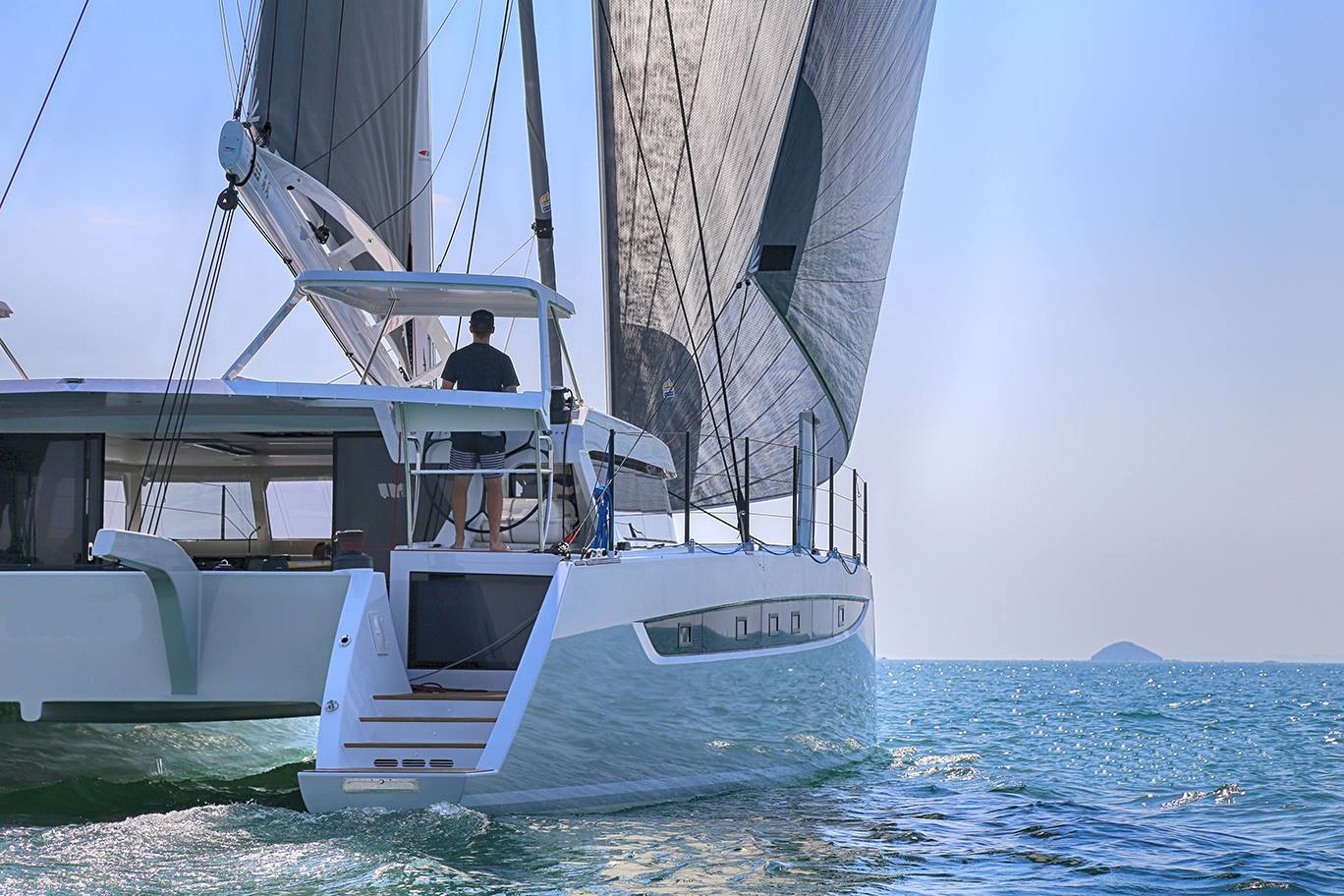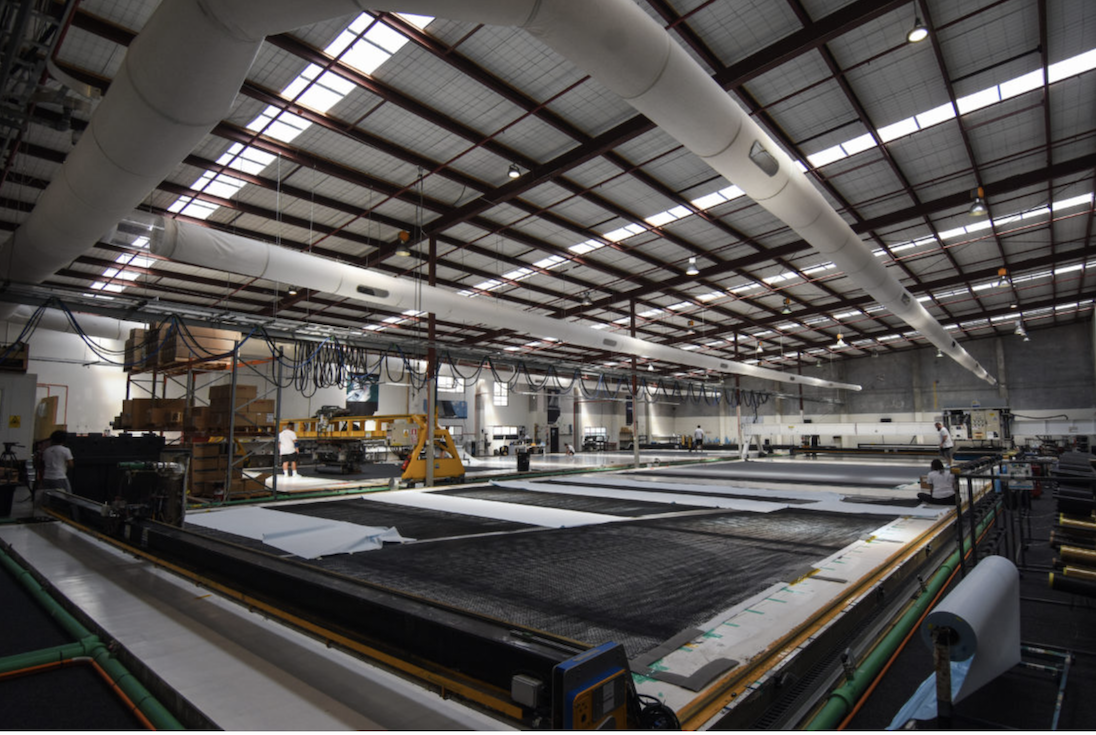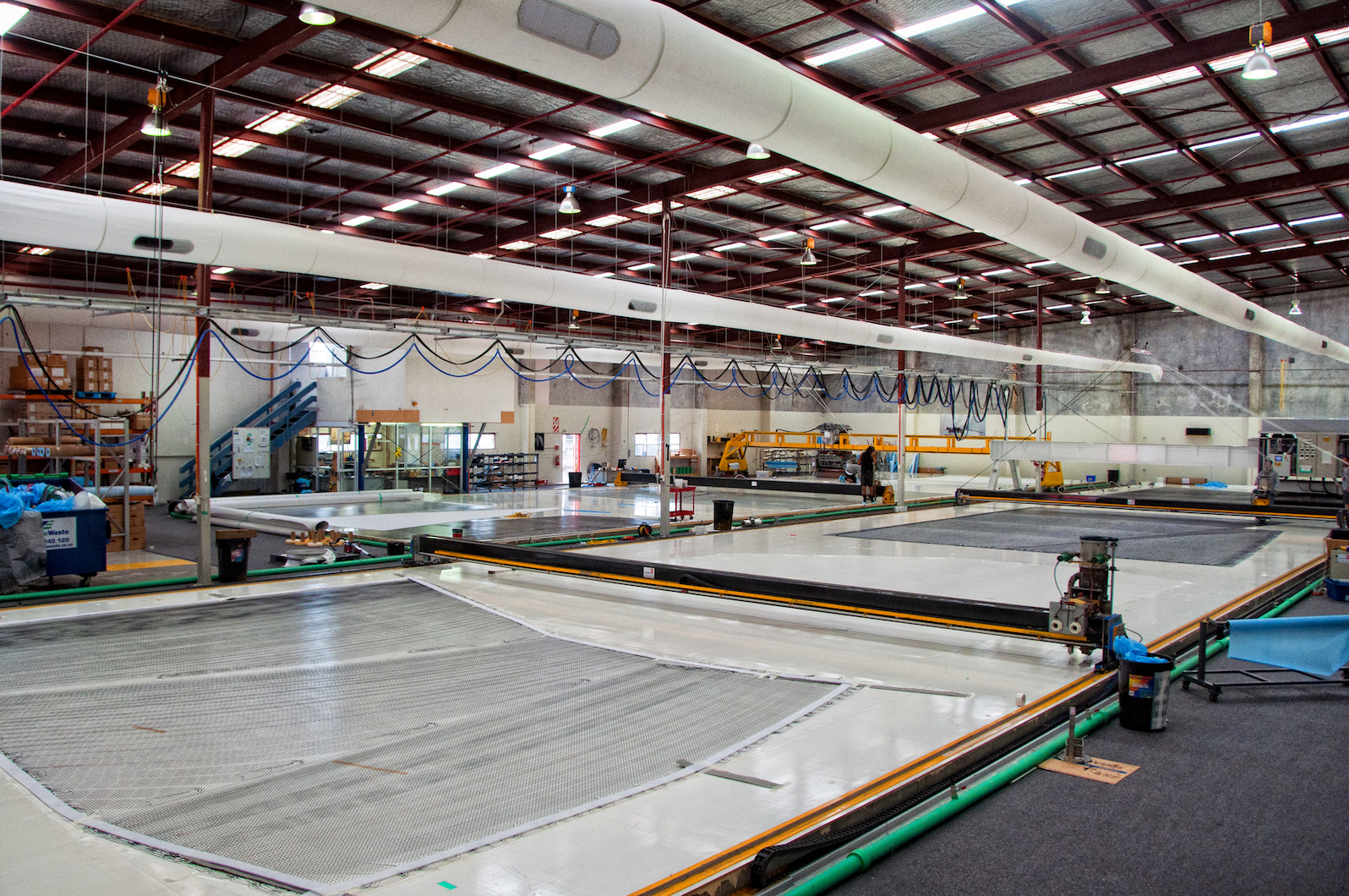Driving force
Regardless of your cruising plans, a decent set of sails is an essential but major outlay.
Written by Scott Alle
Photography by Francesco Rastrelli
30 August 2019
Advertisement
Picking the right sails will improve performance and make your boat easier and more enjoyable to sail.
The Doyle Sails loft in the Sydney suburb of Ryde is a hive of activity on the day I visit.
A spanking new Stratis main for a Sydney 38 is undergoing a careful pre-delivery check, while in another corner a furling headsail is being thoroughly overhauled ahead of many hours of diligent service in the South Pacific. Elsewhere repairs are being carried out on a wide range of sails that reflect the expansion of the humble sail inventory from the once staple three veg wardrobe of jib, mainsail and spinnaker.
Doyle’s Stratis pre-impregnated fibre laminate technology basically means more types of fibres can be laminated into the finished product. From high modulus carbon through to its polyester (read Dacron) range for small cruising boats, Doyle says there is a fibre or fibre blend for every application.
“When I joined Doyle five years ago, it was for the Stratis product,” reveals Shane Guanaria, Owner & CEO of the Doyle’s Sydney loft.
“And we have witnessed a big growth in demand for cruising sails – from 36-foot Jenneaus to Sunreef 80 cats. Investing a little more will reap more performance,“ he rationalises.
Advertisement
He’s right. Many production boats from the big global brands boast hull lines from some of the very best designers around. For monohulls that includes Philippe Briand, Humphreys Yacht Design, Pascal Conq, and multis Morrelli & Melvin.
Unfortunately, some standard rig and sail configurations often do an average job of reflecting the performance abilities of their designs.
That’s where a good sailmaker like Shane comes in.
Multi-faceted
In the multi-hull segment, where there have been the biggest strides in performance cruising and cruising designs, there’s been a corresponding evolution in sail materials and construction techniques.
Modern cruising catamarans and trimarans have unique requirements in terms of sail design and construction. This stems from the extra stability provided by their wide beams, which in conjunction with their lack of heeling can make it difficult to determine when to reef.
“The stability gets transferred into the rig and the sails,” Shane explains.
“So we always base multihull cruising sails on the equivalent monohull plus 50 percent.”
Along with being a heavier weight than their mono counterparts, there are other considerations for multi sails. As many multis have a backstayless rig, then the main will most likely have a very large roach with full battens to support it.
“That’s one of the benefits of having a Stratis sail – you can really locate the fibre where you need it,” Shane details.
“Most of the multi sails we make are either Cruise Laminate or Stratis. If your boat is more oriented toward performance, you would go with a Stratis sail which has a lower stretch. The weight difference from a Stratis to a Dacron sail is 30 to 35 percent.”
He agrees there is still a place for Dacron, especially in Australia where UV can destroy a sail if it isn’t properly stored.
“If you are not necessarily too worried by shape and just want the sail that will last the longest, you still can’t beat Dacron” he acknowledges. “It’s terrible for large roach mainsails because the off-angle loads as you’ve only got zero to 90-degree fibres in a Dacron sail.”
Reefing points are also reinforced, while corner rings and webbings need to be upsized because multis load-up quickly and you need to be able to reduce sail area easily.
According to Shane generally two reefs are enough, but for extended ocean cruising three reefs is a must. “You usually want the top reef around 50 per cent of your luff, and then stagger the next two in-between,” he advises.
“Quite often the first reef is a small tuck, though taking out a larger percentage of sail area. Also, sometimes you just need that small step if you are reaching and loading-up the boat, a small slab is good to put in. We also aim to put reef points at fixed points on the mast.
“You have to get your clew and tack positions right because you can do a lot of damage to your track,” he warns.
Down time
The average cruising cat with a stock main and jib tends to suffer from being underpowered in light air and off the wind. The most effective way to increase sailing performance in these conditions is to add one or more specialty sails to the inventory.
Screechers, reachers and code zeros are all names used for any loose-luff furling sail that flies from a bowsprit. In the multi world though a screecher usually is flat(ter) cut sail for use in light airs upwind.
Code Zeros
“That’s a lot of what we do,” Shane says of the ubiquitous category of sails between headsails and spinnakers which are easily deployed from a furler.
“A lot of multis come with generic sails on them,” he continues. “People buy boats overseas, cruise around the Med for two or three years, and we make tailored downwind gear for them, a Code Zero (radial cut polyesters) and an asymmetrical gennaker (made out of 1.5 ounce nylon).”
He reports owners of mainly larger cruising cats are also realising the advantages of cableless code zeros.
“They are popular as they aren’t as heavy,” he justifies. “The weight of the cable on a 40-footer is 6 kgs and 10 to 12 percent lighter than a panel sail, and for the most part are made out of polyester so they stretch quite a bit under load. But the Stratis ones are carbon tech.”
Monohull KPIs
A lot of cruising boats suffer in varying degrees from a lack of stability. They labour along, burdened by furniture, air-conditioning units, multiple heads and showers. The normal sacrifice is take a bit of weight out of the keel.
So, saving weight aloft is a huge thing. If you get hit by a gust and the boat goes forward instead of sideways, your VMGs on your cruising days out are going to be a lot better and enjoyable.
Shane lays-out the rationale this way: “If we can pull 18 kilos out of a main and a genoa of a 45-footer that’s a big weight saving. Also, when a gusts hits, better designed and constructed sails hold their shape. So, less heeling, and better VMG.”
When you go to order sails, draw-up a straightforward list of items you need to discuss with your sailmaker. Be clear about how you actually use your boat—how much, if ever, you race or head offshore; how often you sail in heavy weather; how long you intend on keeping the boat; the true-wind conditions of your most frequent cruising grounds. And of course, be crystal clear about your budget.
It will all pay off in the long run, and at the most critical moments.
Advertisement
Advertisement
Advertisement






